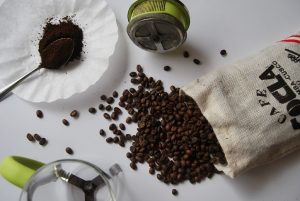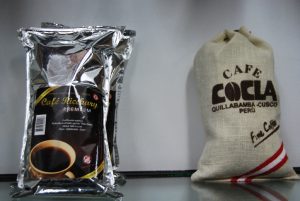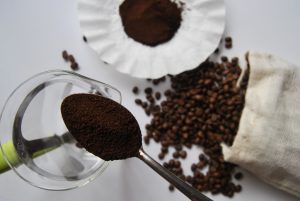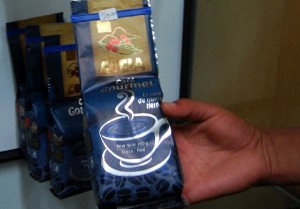A Fragrant Burst of Vitality, Cuzco’s Coffee

The work day begins with a cup of coffee nearby. Coffee is really a big deal. It is the fuel of modern life. It probably changed the course of history with its burst of flavor and energy. People’s lives were transformed almost everywhere on earth.
Peru’s economy depends on exports and not just on people coming to Machu Picchu. Coffee leads all its other agricultural exports. Not content to be just the first, the exportation of coffee grew 80% in 2011. Perú is one of the largest exporters of Coffee in the world.
Coffee is not native to Peru. According to the National Coffee Association of Peru (the Junta Nacional del Cafe) coffee is first recorded as being in Peru by 1760, at the beginning a convulsive period in Peru’s history that culminated in the Tupac Amaru revolt. The first coffee plants are said to have come to Peru from Guayaquil, the important Ecuadorian, Pacific Port.
Not long afterwards the first coffee houses were established in Lima, especially near the San Marcos University, after the fashion of Europe where coffee houses and intellectual life bore a relationship.

But the boom in coffee began almost a century later, in the middle of the nineteenth century, after the wars of independence, with the immigration of Europeans to Peru and the development of British dominance of the economy. This period culminated in railroads pushing into the Peruvian highlands to bring commodities, especially minerals and alpaca fibers, to Pacific ports and then to markets in Europe. At the same time British trading companies established a foothold in Peruvian cities and supplied them with European commodities.

The JNC says that coffee was first exported from Peru in 1887. It made its way to Great Britain and Germany.
While the center of coffee production was in the Perené Valley of Chanchamayo in central Peru, it was also planted and grew in Cuzco during this period.
The history of coffee in Cuzco is tied intimately to the development of La Convención province. This area was in the process of settlement and agricultural expansion when Hyrum Bingham brought the site of Machu Pichu, located there, to the attention of the world.

Most of Cuzco’s coffee is grown near Machu Picchu, in La Convención and Yanatile. While in many areas of the world coffee is produced on estates, because of Peru’s mid- twentieth century agrarian reform, it is almost entirely grown in Peru by small farmers.
In these coffee growing regions of Cuzco, the farmers organized into cooperatives to seek better advantage and these, in turn, are organized into COCLA, a larger cooperative that commercializes some fifty percent of the coffee produced in the area.
Coffee is also grown in other tropical areas of Cuzco, such as in the provinces of Calca, Urubamba, and Quispicanchis.
However, coffee grown in Cuzco is a relatively small portion of the national production, only around 14%. It suffers from the small scale of its producers; they lack access to credit and technical training. The coffee producing areas also lack good roads.

Nevertheless, coffee from Cuzco is exported, primarily to the United States and to Germany. One coffee, the Huadquiña coffee was internationally recognized for its quality in 2011.
Cuzco’s coffee is known for being very fragrant and, as a result, best submitted to a medium roast so that one can continue to appreciate the high floral notes.
As the national and local governments work with producers and industry to raise the level of production, one can expect to see much more coffee from Cuzco in the international marketplace and on tables and in to go coffee cups around the world.
In the city of Cuzco, the history of coffee is relived in the different ways coffee is roasted and made into cups of intense, fragrant brew.

To be brief, at one end you have the very contemporary, international coffee giant Starbucks, while at the other you have a very traditional Cuzco coffee house, which follows the local traditions of roasting and processing coffee, the Cafe Ayllu. While in the former you receive a paper cup of brew from blends of beans, and often flavored, in the latter they bring hot water (or milk) to your table along with a small pitcher of esencia del café, coffee essence–a simple kind of espresso, for you to mix to your taste.
Places that serve coffee find themselves arrayed all along that continuum. If you would like to try coffee brewed from local beans, you will have to ask. Despite the importance of Cuzco as a coffee growing region, many cafes and restaurants use imported coffee.





So why the use of imported coffee?
I love this blog by the way!
Thank you Anthony. From what I am told, it is because many of the cafe owners just think the imported coffee has more draw for local clients for whom the marketing of Cuzco’s fine coffee has not taken hold and for foreigners who might feel more comfortable with what they know at home. Personally, I love the coffee grown in Cusco.